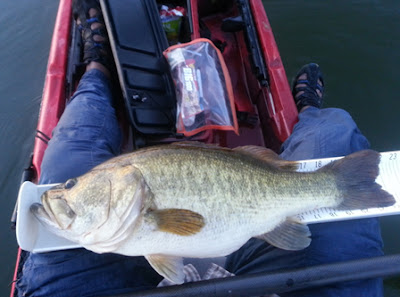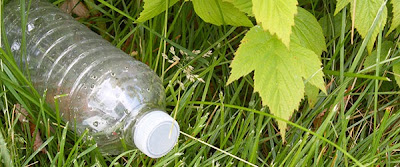Marcus Villanueva is our guest blogger today. Marcus is from the Austin area and fishes the Colorado River chain of lakes often. I have fished with Marcus a few times and noticed how he dissected grass beds and approached them. I didn't have a ton of experience doing this and thought you guys might learn a little something along with me. If you want to keep up with Marcus and his fishing exploits, check out his site at www.withoutapaddleblog.com and check out the pictures throughout the site that his wife Autumn produced. A true family full of talent.
by Marcus Villanueva
by Marcus Villanueva
Living in the Austin Texas area I am blessed with lots of
lakes that have lots of grass. As most
know grass always (at least in Texas) equals big bass. And who doesn’t like catching big bass? No one, that’s who!
When I first started bass fishing I would always hear people
say things like “that rat-l-trap would work great in the grass” or “you gotta
fish in the grass”. So naturally I did
just that, threw a rat-l-trap in the grass.
What did I catch? A ton of
grass! Eventually I got frustrated and
quit fishing the grass. I had absolutely
no idea how to fish grass. Luckily I’m
stubborn and eventually figured it out (with some help) and started catching fish. So my plan here is to help you learn some basic ways to fish
grass.
Typically when people are talking about grass they are
referring to Hydrilla. There are many
ways to attack this cover. In this first
section I will discuss fishing grass that grown to the surface. Find “holes” in the grass and pitch a
weightless soft plastic into it, and just let it slowly sink. More often than not you will get bit on the
initial drop. So don’t leave too much
slack in your line and pay very close attention or it can result in a gut
hooked fish. If you don’t get bit you
can give the bait a slight twitch, often which will be enough to provoke a
sluggish bass. Senkos, Rattlesnakes, and
Flukes are some of my favorites for this.
Sounds easy enough right? Practice
throwing into the holes as some are small and you need to hit them
perfect. When fishing these holes often
times a frog, be it a hollow body or a Ribbit type frog, works well too. On these I like to cast past the hole and
work it back loudly and slowly to the hole.
For a hollow body, once at the edge of the hole I like to make the frog
act scared to enter the open water.
Slowly I’ll work it to the open water then let it sit in the middle (if
the hole is big enough) for a minute. If
that doesn’t work I’ll work it out of the hole fast and erratically, like the
frog is scared for its life! Then I’ll
stop it on the edge of the grass again.
This will give a would be attacker one last clear shot at the frog. If you get a hit and miss, quickly (I mean as
fast as possible) grab your weightless worm and throw it in the hole. Don’t bother reeling in the frog; don’t even
think about the frog. You simply don’t
have time for that now, just think about that weightless worm rod and making a
perfect cast. If you wait too long you
will have missed an opportunity.
Next is another technique for surface grass, punching. Now like many other technique this really requires
specific gear. An extra heavy rod, high
geared reel, 80lb braid, flipping hooks, 1-2oz tungsten weights, and weight
pegs. Ideally, punching grass should be
planned during the winter. Yes, plan
your attack in the dead of winter!
Why? Because Hydrilla is usually
dead or mostly gone by the middle/end of winter. This is important because when the hydrilla
dies back it reveals structure. Sure you
can get lucky punching random grass but your odds go up when you know structure
is present. I don’t know a fish finder
that will see structure through thick grass either. So that’s not a good option. Good baits to punch with are beaver style
baits, Devils Spears, Mag Flukes, and crawfish baits. Punching is like flipping trees, it’s a
numbers game. Pitch your bait out there,
let it sink, and if you don’t get bit reel it up and pitch it out
elsewhere. Unlike flipping reeds you
don’t need to shake the bait once it hits the bottom. Punching is 100% about the reaction
bite. Also the saying “hooksets are
free” absolutely does not apply to this technique. Be 100% sure you have a bite before setting
the hook. Otherwise you’re asking for a
trouble in the way of 1oz of tungsten and a heavy hook flying back at your
face. Yea, eye patches are cool and
you’d have a heck of a conversation piece.
You’d even be able to walk around talking like a pirate every day. But is that worth losing an eye, probably
not.
Now for some submergent grass fishing tips. Typically grass will be below the surface if
it’s deep grass or once it begins dying off in the cold weather. Fishing submergent grass in the winter is one
of my favorite techniques. There are
really only three baits I really use for this, lipless cranks, medium diving cranks,
and spinnerbaits. Crankbaits can be
fished either by retrieving the bait to where it ticks the top of the
grass. Once you feel the grass, stop and
let the crank float back up some. Then
begin retrieving all over until you feel the grass again. There’s endless ways to make this more
efficient by playing with crankbait sizes, line sizes, and rod angles but I
will leave that discussion for another day.
Next, lipless crankbaits.
Again experiment with sizes and weights for different depths. A high speed reel is best for the application. On the initial cast let the bait drop to the top
of the grass and then begin your retrieve, this takes practice. Once you figure out the timing for this you
can get to work. Begin retrieving the
lure back and let it snag the grass slightly.
Don’t let it get buried in the grass or it’s basically a wasted cast. Once the bait snags the grass you will feel
the bait stop. Once you feel that, reel
in the line tight and tug the bait in a sweeping motion. If done correctly the bait will free itself
from the grass and shoot forward rapidly.
This is why you need a high speed reel, to reel in the slack
quickly. Different people prefer
different setups for this technique. I
like to stick with my whippy cranking rod but some like a stiffer medium heavy
worm rod. The medium heavy rod makes it
a bit easier to rip the bait from out of the grass. Another technique for deep grass is to yo-yo
the lipless crank out of the grass.
Again let the bait fall into the grass slightly, reel down, and then
snap the rod up to shoot the bait up and away from the grass. On both the ripping and yo-yo technique the
strike will happen either as soon as the bait snaps forward or as it flutters
back down. So pay close attention to
feel for the strike on slack line.
Spinnerbaits are by far one of my favorite baits to
fish. They work great in the grass
too. Plus they don’t get hung up in the
grass nearly as bad if you let them fall too deep in the grass. Typically I will use a ½ oz. spinnerbait for
grass up to 10’ deep. That is my
preference, I suggest you play around with different sizes and use what you
like best. Fishing a spinnerbait in
grass is similar to a lipless crank. I
like to let them snag in the grass and rip them out. Also letting them tick the top of the grass
works well. If you have a fish finder on
your kayak find the grass edge and mark it with a buoy. Line up parallel to the grass and work the
spinnerbait along it. Experiment with the
distance from the grass until you find what the fish want that day.
Last as with every technique dissect how, where, depth,
retrieve speed, and bait color, of each fish caught. Those are very important to catching fish and
just as important as learning new techniques.






